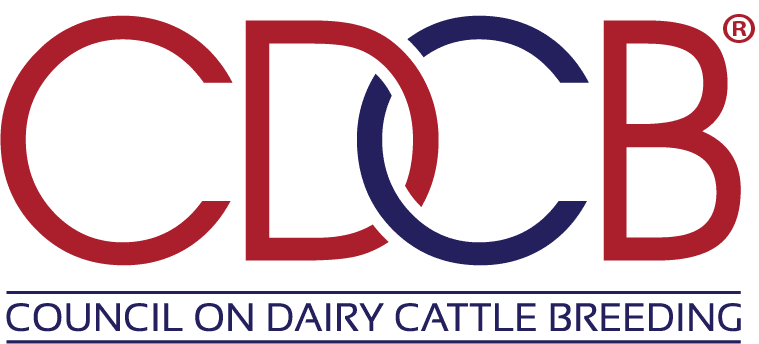April 2022: Changes to Evaluations
Written by Ezequiel Nicolazzi
March 08, 2022

CDCB announces updates to the genetic evaluation system, effective with the April 5, 2022, triannual evaluations. Five enhancements are detailed on the CDCB website.
1. Flexible testing and use of milk-only records
Change: Milk-only records will now be used in the multi-trait evaluation of yield traits. Previously the genetic evaluation software required that fat yield was recorded, and milk-only records were excluded.
Immediate impact: A greater number of records will be used to compute evaluations for relevant traits, such as yield, cow fertility and health. Milk yield is expected to be impacted more than other traits. Standard deviations and reliabilities for milk, fat and protein traits will increase slightly due to additional records. Little change in Predicted Transmitting Abilities (PTAs) is expected, with extremely high correlations of the new PTAs versus previous.
Long-term impact: This change, with further research, can enable more data utilization from diverse testing options and automated data collection systems.
2. Type composite update on non-Holstein breeds
Change: Definitions for Body Weight Composite (BWC), Udder Composite (UDC) and Feet and Legs Composite (FLC) were updated in the CDCB system to match those of breed associations, per the table at www.uscdcb.com.
Impact: The change in weighting of traits within the composites will affect the Net Merit $ (NM$) ranking of animals, as the three type composites have a combined 13.2% relative weighting on NM$. Jerseys will be most impacted, because the standard deviation of BWC increased to be more consistent with the emphasis already present in the Jersey Performance Index (JPI). Average NM$ impact for Jersey A.I. bulls ranged from -10$ to -25$ on proven and young genomic bulls, respectively (per test run based on the December 2021 evaluation, including all changes implemented in April 2022). A larger reduction in NM$ was observed in the crossbred Jersey population.
3. New phenotypic editing on fertility evaluations
Change: New edits now exclude fertility records from herds with large amounts of embryo transfer (ET) births but a low number of ET reproductive events, to reduce potential bias of unreported ET events on fertility evaluations of cows and bulls.
Impact: The edit directly impacts evaluations for Sire Conception Rate (SCR), Heifer Conception Rate (HCR), and Cow Conception Rate (CCR), and also indirectly affects Daughter Pregnancy Rate (DPR). Little change is expected for bulls with daughter records; the PTA correlation after implementation of this edit is over 99%. Individual animals – especially elite young bulls with early daughter records – may be highly impacted, especially by the new edit on HCR/CCR.
4. International evaluation processing change in policy for HCR and CCR
Change: For animals with foreign evaluations, domestic PTAs for HCR and CCR (when available) will replace the parent averages previously used if animals’ foreign evaluations were below a 15% reliability threshold. This threshold had been implemented in 2012 to reduce instability in predictions caused by low MACE correlations with some countries.
Impact: In CDCB’s test run, only a small fraction of the population was directly affected. Since the reference population is affected, there is some impact on the overall evaluation, both as an average and as single-animal variation. The change was applied to all breeds. Brown Swiss will see the largest impact because of more foreign than domestic bulls.
5. International evaluations processing change in policy for DPR
Change: In international evaluations for Daughter Pregnancy Rate (DPR), a determination is made to use direct traits or indirect traits for foreign animals. Now, this decision is streamlined to consider only two trait reliabilities, where the previous method compared reliabilities of several fertility traits.
Immediate impact: CDCB’s test run shows the direct DPR trait is now used for many more foreign animals, which was the desired outcome. Most of the animals affected are old-to-very old animals, with Ayrshire being the breed most impacted.
